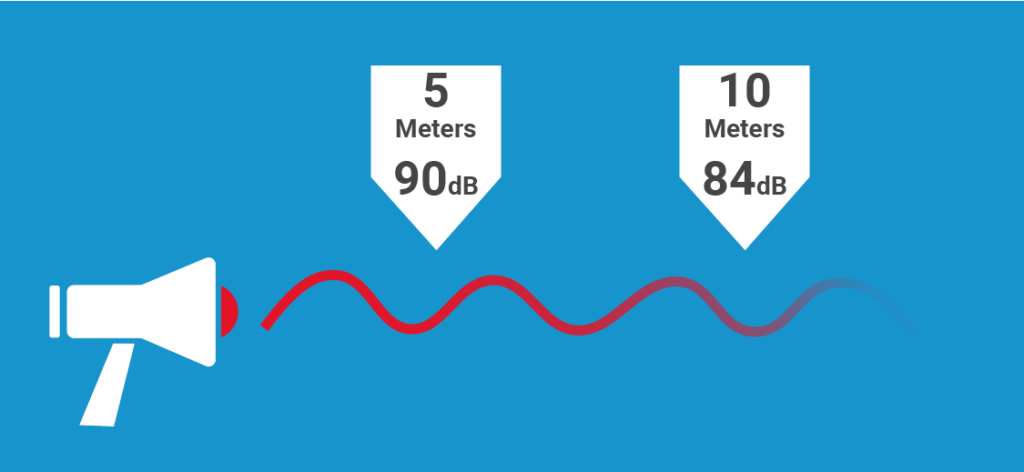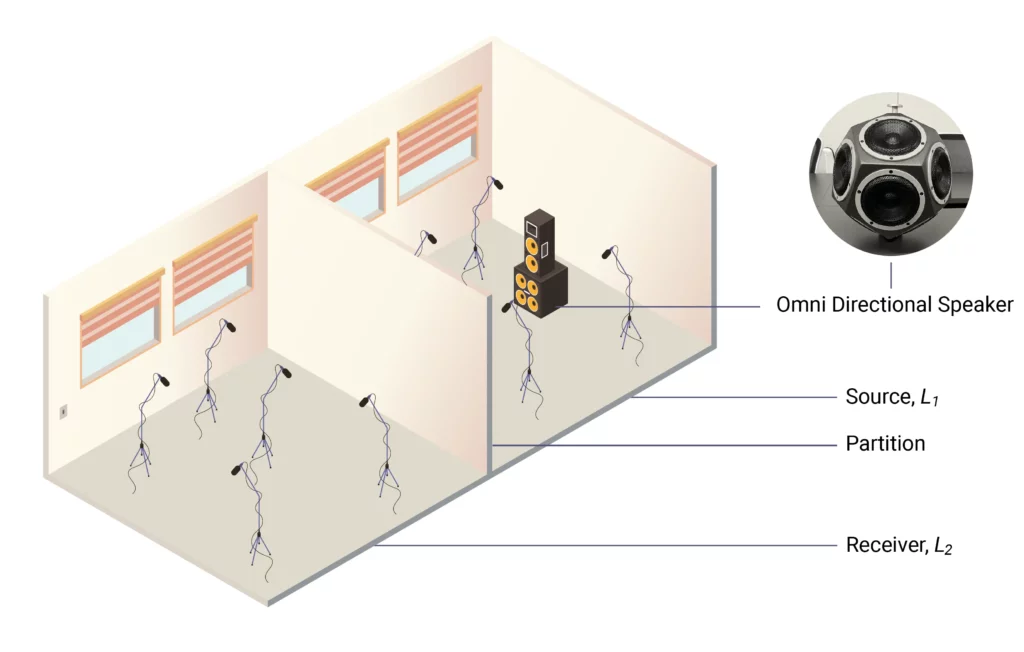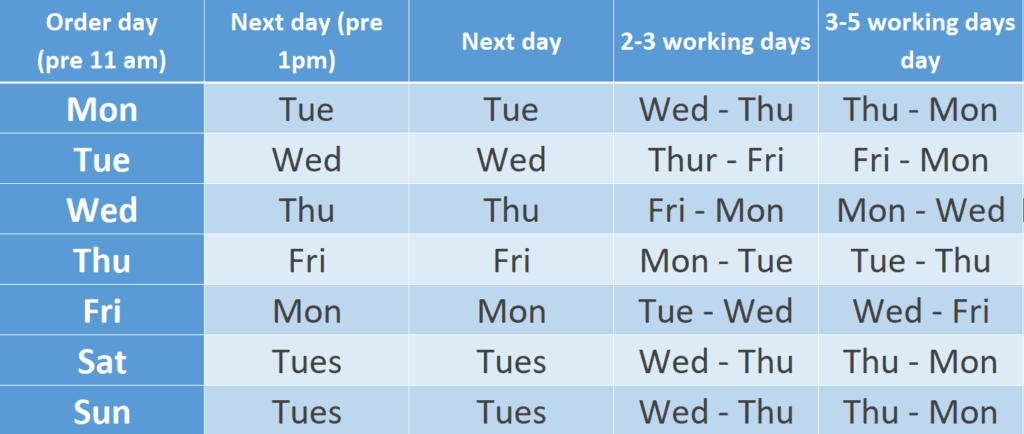/
The Decibel Scale
Understanding decibels
Decibels are how we measure sound but due to the logarithmic nature of the Decibel scale, it isn’t the most intuitive concept to grasp. If you are interested in soundproofing the key thing to take away from this article is that reducing sound by 10dB is a perceived halving of the sound you hear. Lets take a look at some examples….
Decibel reduction examples
Below you can hear our tagline “Creating Quieter Spaces Together” The first sentence will be at full volume (the dB of this depends on your speaker volume) then the second sentence will be reduced by the number of decibels shown above.
10 dB reduction
20 dB reduction
30 dB reduction
40 dB reduction
50 dB reduction
60 dB reduction
Why these recordings aren’t a perfect measure of dB reduction
These recordings are not a perfect reproduction of how the sound will change because the environmental factors in a real space will colour the sound, giving you a different perception. However, it gives you a good idea as to what to expect when you reduce sound by 10dB.
The Science behind the decibel scale
Sounds are fluctuations of pressure. The human ear will pick up a pressure fluctuation and send it as a signal to the brain to decipher as a recognisable sound. The range of human hearing spans a very wide range of pressures, where the quietest is 0.00002Pa (Pascals) and the loudest is about 63Pa. This gives a ratio of 3150000:1, making calculations awkward. To circumvent this, Pascals are converted to decibels, giving a figure that can be more easily understood and worked with. The table below shows the decibel levels of some common sounds and what sound pressure they have been converted from.
1Pa = 94dB – Hair dryer
0.1Pa = 73dB – A passing car
0.01 = 54dB – The hum of a refrigerator
The measurement of decibels is directly correlated to distance – doubling the distance means a halving in decibels. However, because the decibel is converted from pressure using a logarithmic ratio, a halving in decibels is equal to a reduction of 6dB.

The mathematic descriptions of sound differ from the human perception of sound. A change of 3dB for humans is just about perceptible, but a change of 10dB is perceived as a doubling/halving in noise. The sound bite below helps to illustrate the change.
How many decibels is too loud?
Everyone’s reaction to noise is different, but it can be assumed with a reasonable degree of certainty that constant noises between 70 – 85dB will become very annoying. This will be things like a washing machine or a dishwasher at 70dB, up to heavy traffic or a noisy restaurant at 85dB. However, above 85dB and hearing can become damaged by prolonged periods of exposure. Have you ever received a warning from your phone that you have exceeded the amount of time listening at a certain volume? The volume level of personal listening devices will be set at a maximum of 105dB – it is possible that at these levels hearing damage can occur within 5 minutes of prolonged listening! The threshold of pain is 140dB – some fireworks exceed this level.
For jobs that require extended periods of time exposed to sounds above 85dB, there are government regulations in place determining hearing protection.
How we calculate the decibel reduction of our soundproofing partitions?
To calculate the decibel reduction of an airborne soundproofing partition, you need a source room, and a receiver room, and the soundproofing partition is to be installed in the space between the two, as shown in the diagram below.

Pink noise is played in the source room and measured, giving L1. The level is then measured in the receiver room, giving L2. The difference between the levels of the two rooms is the sound insulation rating of the partition.
To test impact noise on a floor/ceiling, a machine called a “tapping machine” is utilised on the floor to be tested. The level of the noise within the room underneath the floor being tested is then measured and a decibel figure is given for the rating of that floor.
how many decibels is too loud for neighbours UK?
Government regulations state that partitions separating different dwellings must achieve an airborne noise reduction of 45 decibels. This means that if the sound pressure level in the source room is 90 decibels, then it must be 45 decibels or less in the receiver room to achieve a pass from that test. As the result of this test will show a difference between the two levels, a higher decibel rating gives higher performance.
The regulations for floor impact testing state that 62 decibels must be achieved. As the measurement for impact gives a level figure rather than a difference figure, the lower the decibel rating the higher the performance.
What dB rating we give to existing structures?
Similar to the doubling in distance rule, a doubling in mass of a party wall will halve the amount of sound coming through that wall. This is called Mass Law and is somewhat of an oversimplification, but on average it applies to most walls. This means that a soundproofing concrete or soundproofing brick wall will always perform better than a simple plasterboard and stud wall – so far so logical. However, iKoustic has developed a product called the MuteClip©, which decouples one wall from another and works through vibration isolation. This works outside of the mass law logicality because the clips add very little mass but offer the best insulation of other products on the market. Essentially, when the vibrations on the source side of the wall pass through the vibration isolation clip, the kinetic energy produced by the vibrations is converted within the rubber to thermal energy.
Take a look at the graph below – this shows the sound insulation difference between a simple plasterboard partition with a MuteClip single system partition. The difference in performance is massive! Click here to find out more about MuteClip systems.


